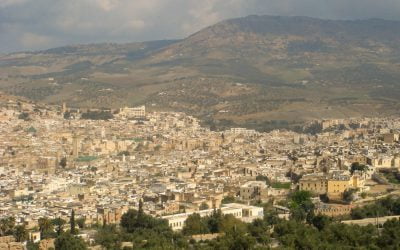MARAKESH MOROCCO
The city of Marakesh is a three hour drive South from Casablanca.
HERITAGE SITE | MARAKESH, MOROCCO
-
Marakesh is the second-largest city of Morocco and is located at the foot of the Atlas Mountains. Whether due to reddish hue of the nearby mountains or because of its buildings and ramparts of beaten clay, it is known as the ‘Red City’.
-
It was founded in the mid-11th century by Yūsuf ibn Tāshfīn of the dynasty of the Almoravids, and it served as the Almoravid capital until it fell to the Almohads in 1147.
-
Marrakesh developed into one of the great citadels of the Muslim world at its time. The city was fortified by Tashfin’s son, Ali ibn Yusuf, who in 1123 built the ramparts which remain to this day, completed further Musjids and palaces and even developed an underground water system in the city known.
-
The old city today is still famed for its abundant markets, with a maze of alleys and souks revealing new treasures at every turn, including aromatic spices, colourful textiles, sparkling lamps, and jewellery.
-
The landscape surrounding the city is equally breath-taking, as the shifting sands of the desert spread out from the town, they meet the snow-capped Atlas Mountains in the distance. With so many interesting sites, coupled with its setting, Marrakech is today the most- visited city in the country.
-
The heart of the medina is the Jamā el-Fnā square. Literally translated as the ‘assembly of the dead’, this was location for public executions in the 11th century. Very unlike its name, today it is lined with hundreds of shops and behind them thousands more – making it the largest market in Morocco. There are also shows, demonstrations, story-tellers, traditional herbalists and most interesting of all snake charmers!
-
Not far off is the 12th-century Kutubiyyah Musjid with its 77m tall minaret and built by Spanish captives. Its building was commissioned by the Almohad dynasty and acquired its name due to books being exchanged at the spot.
-
There is also the 16th-century Saʿdī Mausoleum, the 18th-century Dar el-Beïda Palace (now a hospital), and the 19th-century Bahia royal residence.
-
Of all the sites, the most beautiful is the Bahia palace. It was named after the favourite wife of Si Moussa, the powerful Grand Vizier of Sultan Hassan I. His intention was to build the greatest palace of its time, a lofty goal that only began to come close to fruition when his son took control of the palace in 1894. It was intended to capture the essence of the Moroccan style and through its magnificent decorations, definitely did so. Today it is regarded among the finest examples of Andalusian and Moorish architecture in Morocco. With its huge gardens, courtyards and 150 rooms all intricately designed, it doesn’t seize to impress.
-
The 12th-century walls that defended the city so many times in its history still stand strong and surround the medina. Among the surviving gates to the medina, the stone Bab Agnaou is particularly notable.



